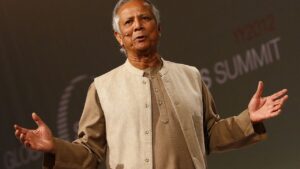In a significant escalation of political unrest, Nepalese police deployed tear gas and water cannons on Friday to disperse thousands of demonstrators in Kathmandu who were calling for the restoration of the monarchy. The protests prompted local authorities to impose a curfew in the area.
Nepal transitioned to a federal republican system in 2008 after the monarchy was abolished as part of a peace agreement that ended a decade-long civil war, resulting in over 16,000 deaths. Recently, support for reinstating the monarchy has surged, paralleling rising public discontent over political instability, rampant corruption, and sluggish economic development.
Mina Subedi, a 55-year-old protester, expressed her frustrations, stating, “The country should have developed significantly. People should have had better job opportunities, peace and security, and good governance. We should have been corruption-free. But things have only deteriorated.”
Demonstrators gathered near the national parliament, chanting that the king and country were “dearer to us than life.” According to police spokesman Dinesh Kumar Acharya, officers responded with tear gas and water cannons after protesters breached a restricted area and vandalized property.
In response to the clashes, local authorities enacted a curfew to restore order. Meanwhile, opposition parties organized a counter-demonstration elsewhere in the capital to “safeguard the republican system.” Pushpa Kamal Dahal, a former guerrilla leader and three-time prime minister, asserted, “Nepalis will not return to the past,” acknowledging the frustrations of those supporting the monarchy.
Gyanendra Shah, the abdicated king, who has largely remained silent on Nepal’s tumultuous politics, has recently made public appearances alongside supporters. Shah ascended to the throne in 2001 after a palace massacre claimed the lives of most of the royal family. His coronation occurred amidst the Maoist insurgency, which significantly impacted the nation’s trajectory.
In 2005, Shah suspended the constitution and dissolved parliament, igniting a democratic uprising that saw the Maoists ally with traditional political factions to organize mass protests. This collective action ultimately led to the abolition of the 240-year-old Hindu monarchy in 2008, marking a pivotal moment in Nepal’s history.
As tensions continue to rise, the future of Nepal’s political landscape remains uncertain, with both sides grappling for control and direction in a nation grappling with its identity.











+ There are no comments
Add yours